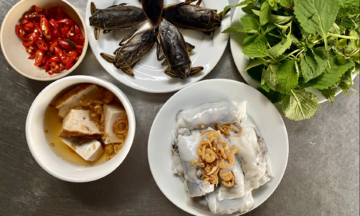Located in Cai Be district, 46 km from My Tho city center, Dong Hoa Hiep sits in the Mekong Delta. The nearly 300-year-old village features ancient houses nestled among fruit orchards and crisscrossing canals, creating a mystical allure for visitors.
 |
A corner of the ancient village seen from above. Photo: Sao Bien |
In 2017, the Ministry of Culture, Sports, and Tourism recognized Dong Hoa Hiep as a National Relic and one of the four most beautiful ancient villages in Vietnam, alongside Duong Lam (Hanoi), Phuoc Tich (Hue), and Loc Yen (Da Nang). It has become a popular destination in Dong Thap province.
This 48-hour itinerary for Dong Hoa Hiep is based on suggestions from Thu Trang, a tour guide specializing in the Mekong Delta, and research by VnExpress reporters.
Day 1
Traveling from My Tho
Visitors from afar can reach My Tho by air, with the nearest airports in Ho Chi Minh City and Can Tho, then continue by bus to the city center. From Ho Chi Minh City, buses depart from the Mien Tay bus station, taking about 2.5 hours. One-way tickets cost 100,000 to 150,000 VND, depending on the bus type and destination.
To reach Dong Hoa Hiep, visitors can travel by car or motorbike from My Tho city center, following National Highway 1A. Motorbike rentals cost around 100,000-150,000 VND per day.
Enjoying My Tho hu tieu for breakfast
My Tho hu tieu is a familiar dish for locals and readily available at numerous eateries in My Tho city center. The dish consists of three main parts: hu tieu noodles, broth, and accompanying ingredients. The noodles are made from Go Cat rice grown locally, giving them a distinctive chewy and slightly crunchy texture. The broth is made from beef, pork, and chicken bones, combined with roasted onions, dried seafood, ginger, and various spices, simmered continuously for about 8 hours to create a natural sweetness. Accompaniments typically include fried garlic, minced meat, quail eggs, boiled shrimp, pig liver, and lime juice. A bowl costs around 35,000 VND.
Exploring Dong Hoa Hiep ancient village
Dong Hoa Hiep boasts seven ancient houses dating back 150-220 years and 29 houses built 80-100 years ago in a combined Eastern and Western style. These houses still retain many mother-of-pearl inlaid parallel sentences, intricately carved furniture, and rare porcelain items, reflecting the elegant taste of wealthy families in the old Southern region.
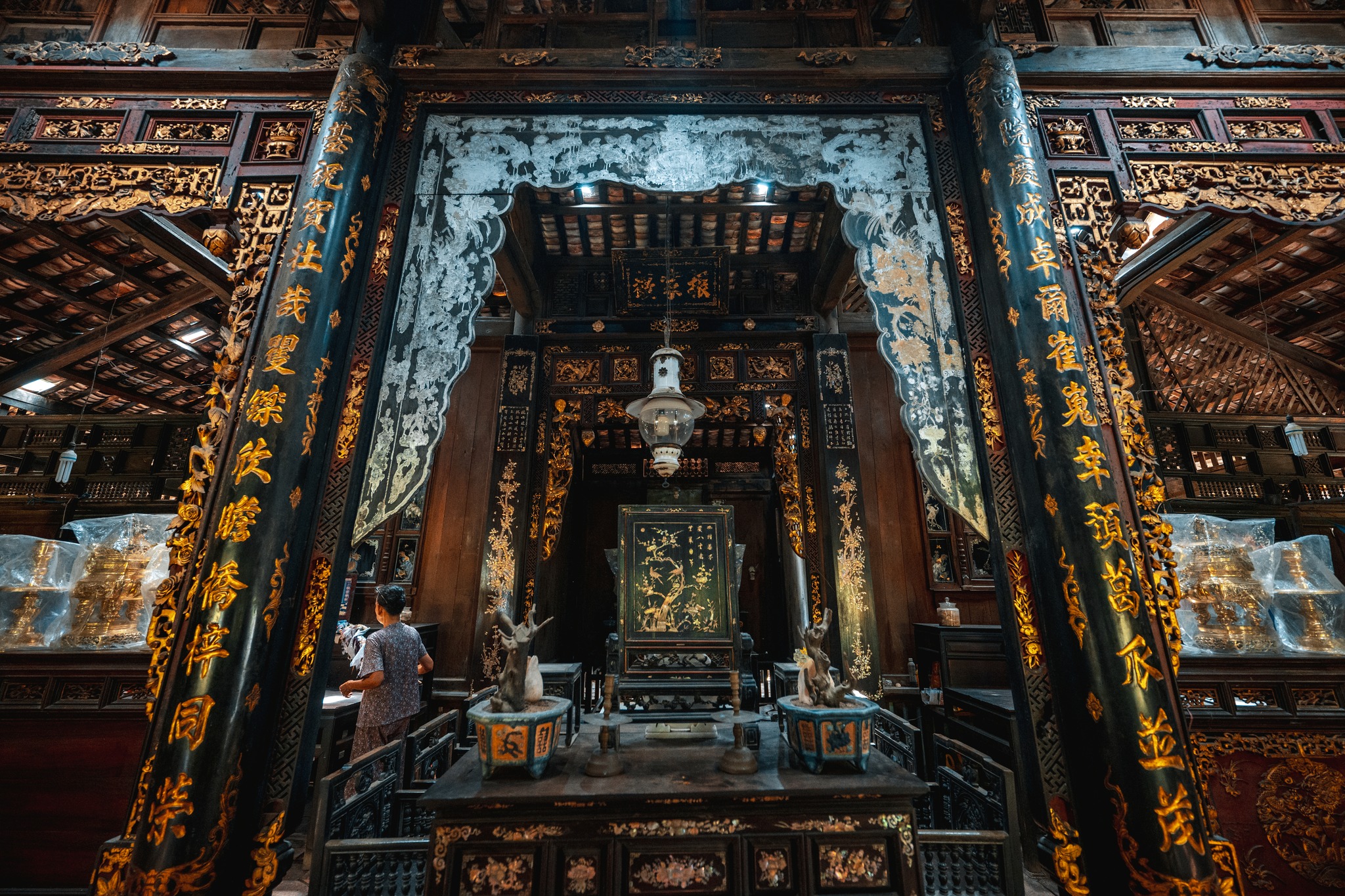 |
Front of Tan Phong communal house. Photo: Nguyen Thuong Toan |
The nearly 200-year-old house of Le Quang Xoat in the ancient village. Photo: Lens Culture
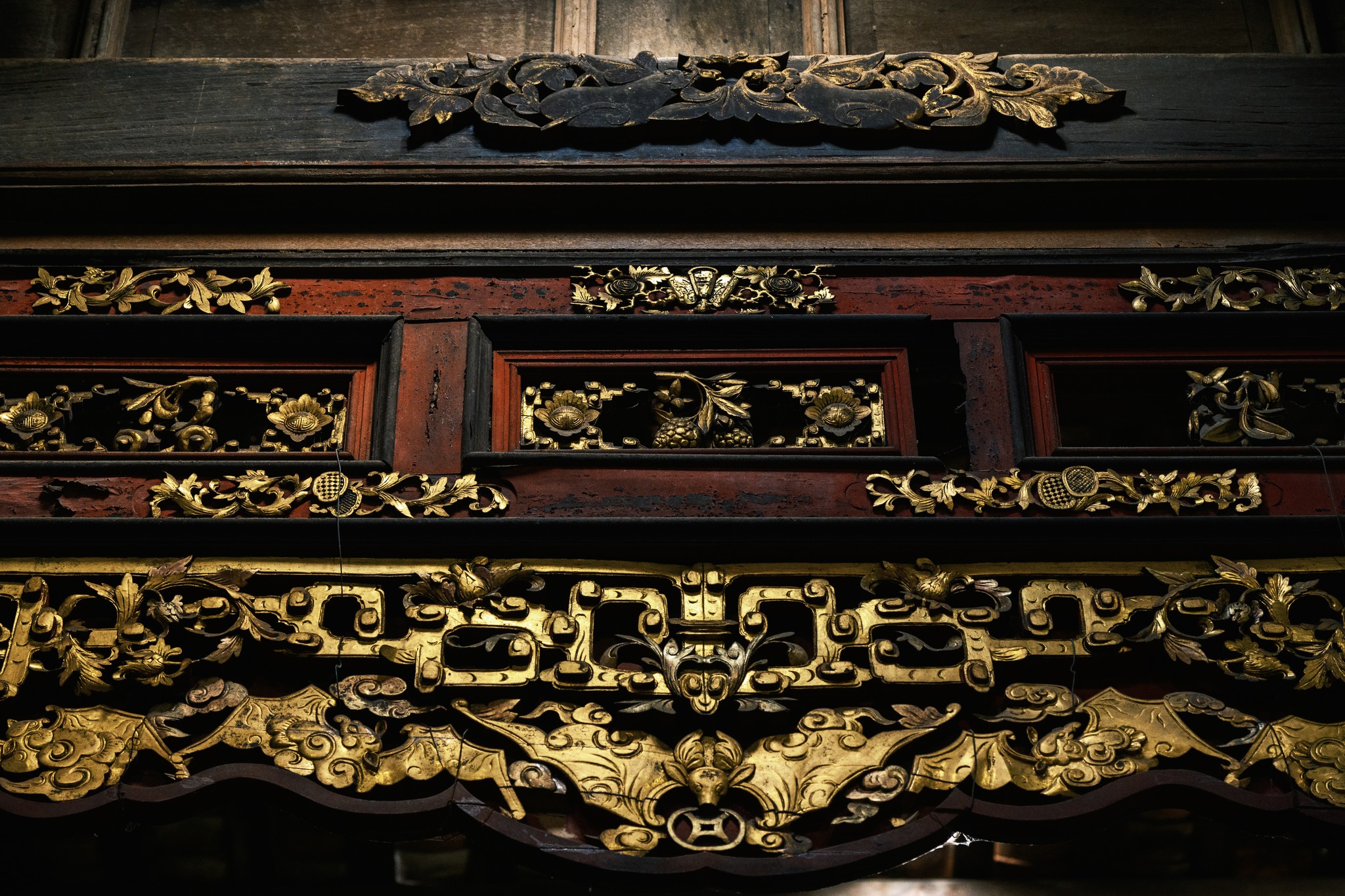 |
The interior of Le Quang Xoat's house in the ancient village. Photo: Lens Culture
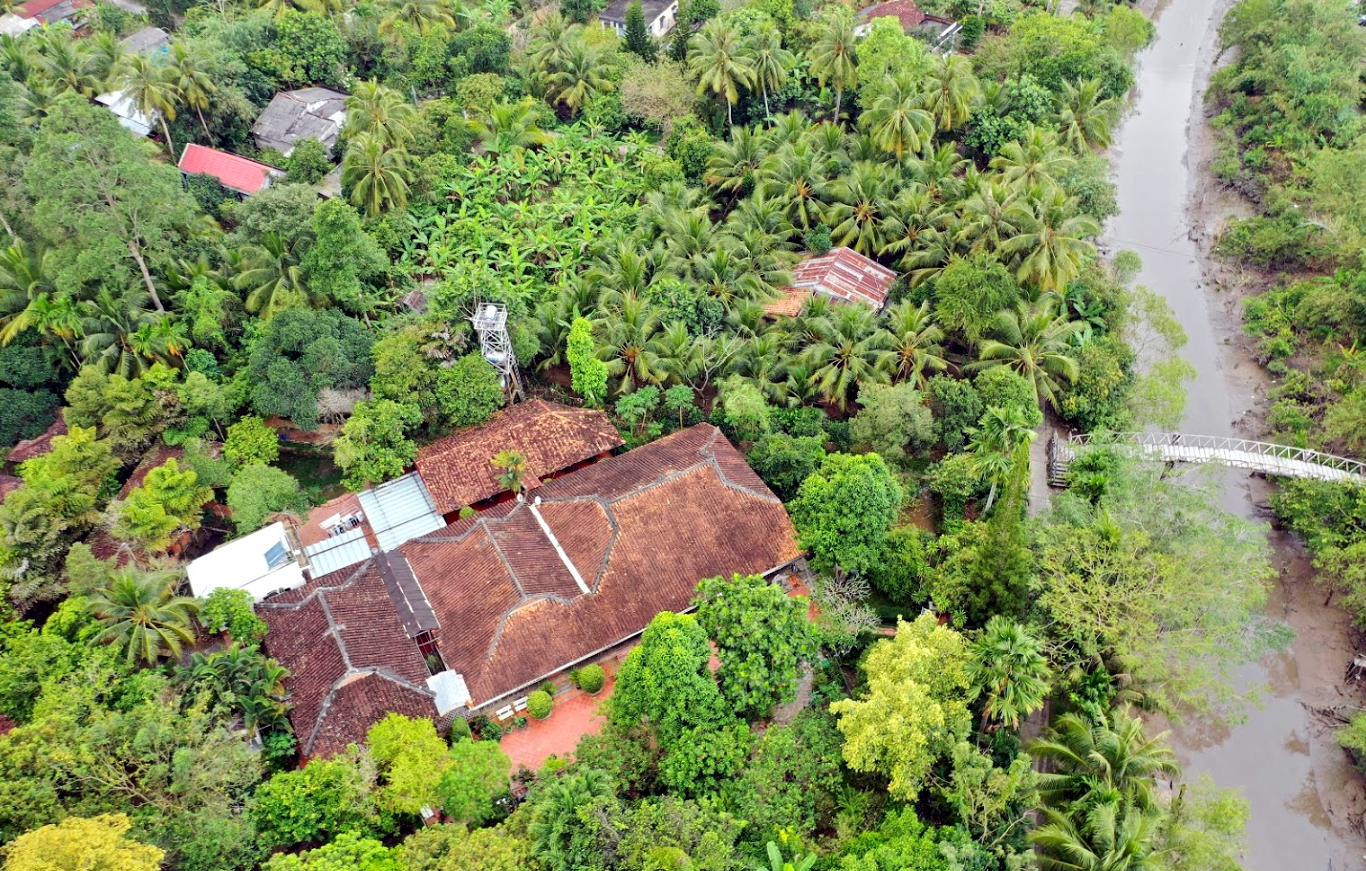 |
Lacquered and gilded decorations in Le Quang Xoat's house in the ancient village. Photo: Lens Culture
One highlight is the house of Le Quang Xoat, a 5th generation descendant who lives in, cares for, and preserves the ancient house. Built in 1818 on a 750 m2 area, the house follows the Hue “nha ruong” (garden house) architectural style, with three compartments, two wings, an "L" shape, and elaborate carvings and decorations. From the columns, beams, walls, and floors to the altar, everything is made of precious woods like ironwood and "cam xe."
Besides visiting the ancient houses, visitors can stroll or cycle around the village, take photos, and enjoy local fruits like mango, star apple, and jackfruit. "The ancient village is still relatively quiet, suitable for those who enjoy cultural experiences and a slow pace of life in a peaceful setting," Thu Trang said.
Lunch featuring local specialties
Many restaurants around the village serve local specialties. Thu Trang recommends Nha Co for lunch, with dishes like lotus stem salad, grilled snakehead fish, crayfish hotpot, and Cu Lao hotpot. Dishes range from 50,000 to 200,000 VND.
For accommodation, visitors can choose homestays or guesthouses near the village for convenient exploration or return to My Tho city center to enjoy the nightlife and street food. Room rates range from 300,000 to 1 million VND per night.
Staying overnight in the village allows visitors to experience the morning market, listen to "don ca tai tu" (amateur folk music), or participate in activities like weaving and cooking with locals.
Day 2
Breakfast and exploring the local market
Thu Trang suggests experiencing a local market during your Dong Thap exploration. Most vendors are farmers who directly sell their homegrown vegetables or dried seafood, without intermediaries, resulting in lower prices. Visitors can buy local specialties as souvenirs, like "mam tom cha" (shrimp paste), Go Cong sausages, and orchard fruits.
Besides agricultural products, the Mekong Delta's local markets offer various snacks like "banh khot" (mini savory pancakes), "banh tam bi" (tapioca noodles with shredded pork skin), sweet rice cakes, crab cakes, orange cakes, and hot tofu.
Visiting Tan Dong communal house
Tan Dong communal house is located on National Highway 50 from Ho Chi Minh City to Go Cong, in Tan Dong commune. Belonging to Go Tao hamlet, it’s also known as Go Tao communal house. According to historical records, the communal house dates back to the reign of King Minh Mang, with its embossed patterns and motifs characteristic of Nguyen dynasty architecture.
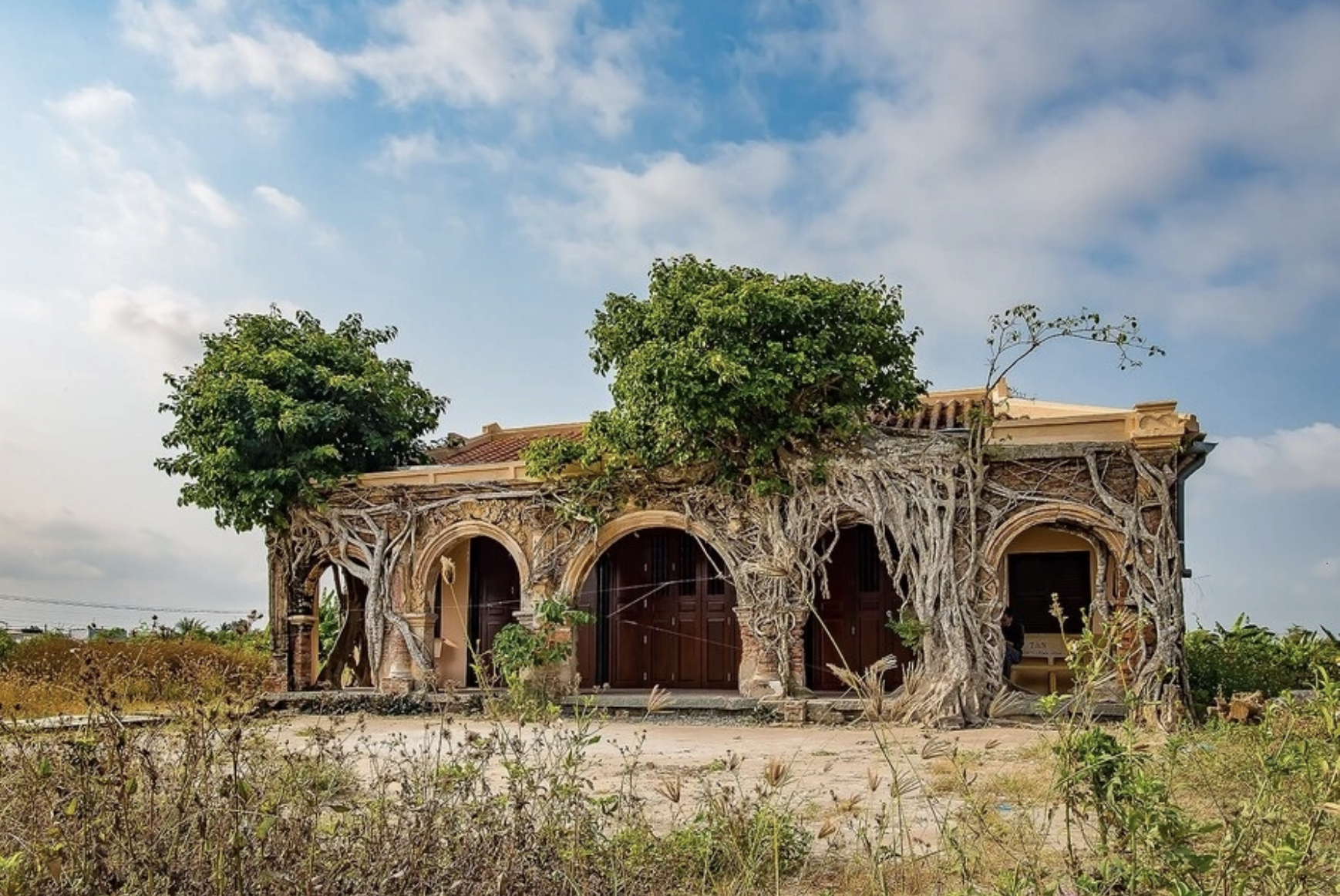 |
The communal house hosts festivals, the largest being the Ky Yen, Thuong Dien, Ha Dien, and Cau Ong ceremonies. Over time, the building deteriorated and was abandoned. It was restored in 2020.
The main attraction is its ancient beauty, combined with two bodhi trees growing on the walls, embracing the five entrances. This location is popular among TV drama directors for historical film settings.
Visiting Tan Thanh beach
From Go Cong, a 15 km drive along provincial road 862 leads to Tan Thanh beach resort. Along the way, you'll see rows of shady "so dua" trees. Famous for clam farming, the area has many thatched-roof restaurants on the beach where visitors can enjoy clams and other seafood while enjoying the fresh, cool air.
A concrete bridge built on the beach, painted blue, stands out against the sand. From afar, it resembles a straight path connecting to the horizon, attracting many young people for photos.
At Tan Thanh beach, visitors can register for clam digging, receiving equipment including a plastic basket, a rake, and a sickle. Digging time is unlimited; afterward, visitors can buy the clams for 30,000 VND per kg or return them. Homestays and guesthouses are available near Tan Thanh beach. Restaurants near the beach sell fresh seafood like clams, crabs, shrimp, and scallops, priced from 30,000 to 200,000 VND per serving.
Alternative itinerary
Thoi Son islet, also known as Con Lan, is located downstream of the Tien River. It offers horse-drawn carriage rides, visits to bee farms, and honey tea tasting. Groups can participate in activities like ditch fishing, tug-of-war, and adventure cycling at tourist spots on the islet.
Tuan Anh










